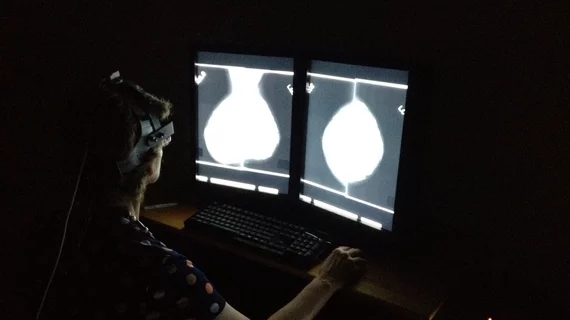Some radiologists' stress lowered during COVID, but it was short lived
The onset of COVID undeniably increased the burden on the healthcare system as a whole in early 2020, but for some radiologists, the early days of the pandemic actually reduced work-related stress.
Breast radiologists are known to have higher rates of burnout in comparison to many of their peers, but the beginning of the pandemic, when most nonurgent medical visits were postponed as a mitigation tactic to slow the spread of the virus, brought this group of readers something not often encountered within the specialty—downtime.
New data published in the European Journal of Radiology details breast radiologists’ experiences with burnout before, during and after the height of COVID and it offers what some might consider surprising insight regarding how they felt when their work life was flipped on its head. According to the 261 respondents, each of whom specializes in breast imaging, 5 out of 6 common stressors, including work pace, work-life balance, care of dependents and financial strain, improved for them after the onset of COVID.
“The prevalence of stressors after the onset of COVID-19 was lower in breast radiologists than before COVID-19. For example, the highest stress reported by breast radiologists both before and during the pandemic was working faster than one would like,” corresponding author Jay R. Parikh, MD, a professor with the Division of Diagnostic Imaging at the University of Texas MD Anderson Cancer Center, and colleagues explained. “However, during the pandemic there was a significant decrease in this stressor, presumably due to the decrease in mammography volume that occurred during the pandemic.”
Those slower paces were short lived, however, the authors noted; when facilities began increasing patient capacity again, radiologists were faced with an onslaught of patients, resulting in backlogs of studies and increasing respondents’ burnout to levels slightly higher than those reported prior to COVID.
In line with that, radiologists reported feelings of depersonalization and emotional exhaustion “monthly” and “weekly” in January 2021 compared to “several times a year” and “a few times a month” before the pandemic. Nearly half of the participating radiologists reported considering leaving the field during the time of the survey’s completion, with work-life balance being the biggest influence.
“Within the United States, the estimated cost for an organization to replace a physician is in the order of $1 million,” the group noted. “Therefore, there is not only a moral case but a business case for radiology practice leaders to address radiologist burnout.”
The team went on to explain that burnout has been historically addressed by targeting physicians’ resilience; in contrast to that methodology, they suggested that leaders should instead focus on their facility’s processes to improve burnout. The group believes this could be achieved, in part, by allowing more flexible schedules and ensuring appropriate staffing so that radiologists are not constantly overburdened with mounting workloads.
Learn more about the study’s data here.

